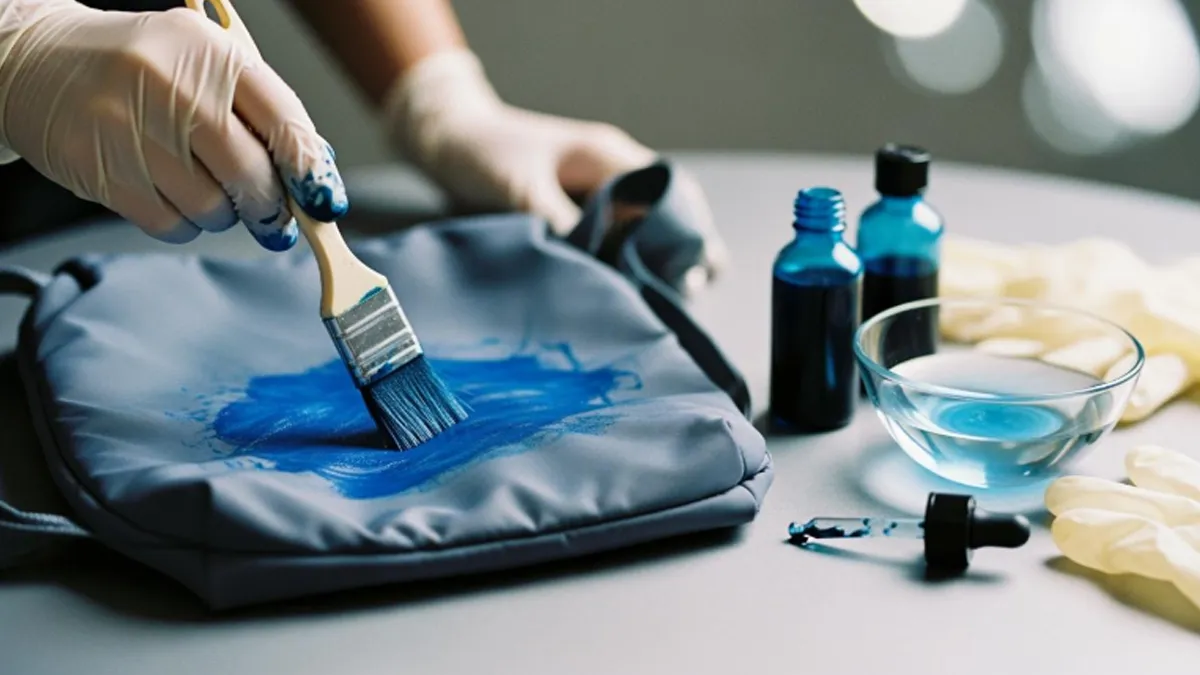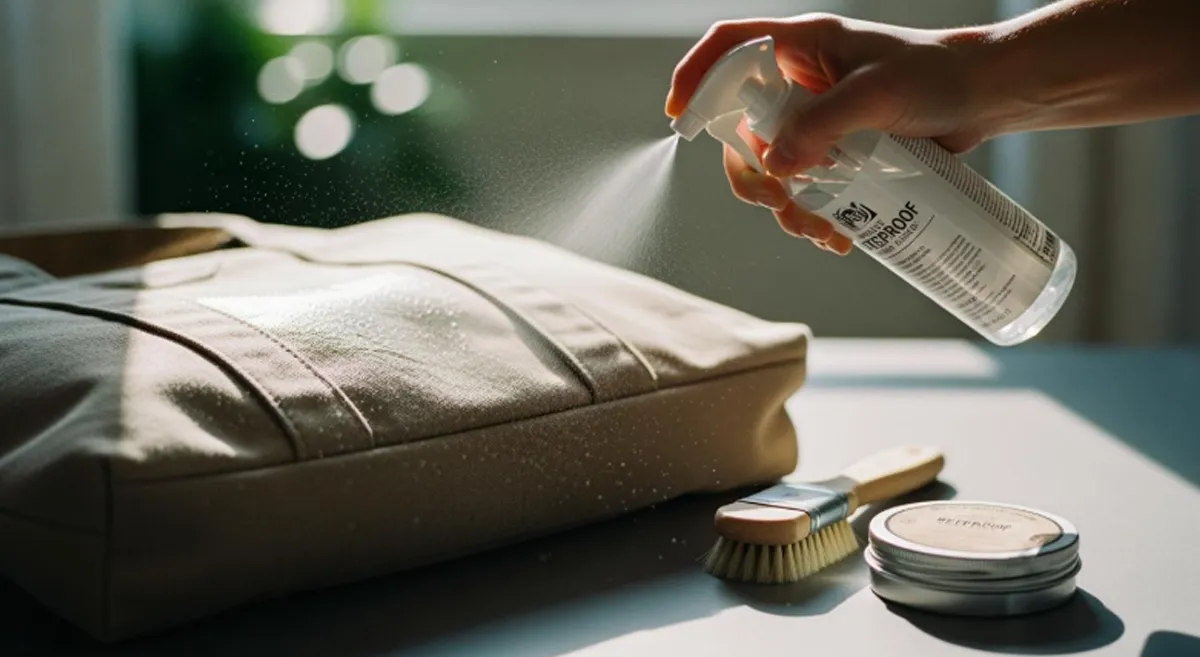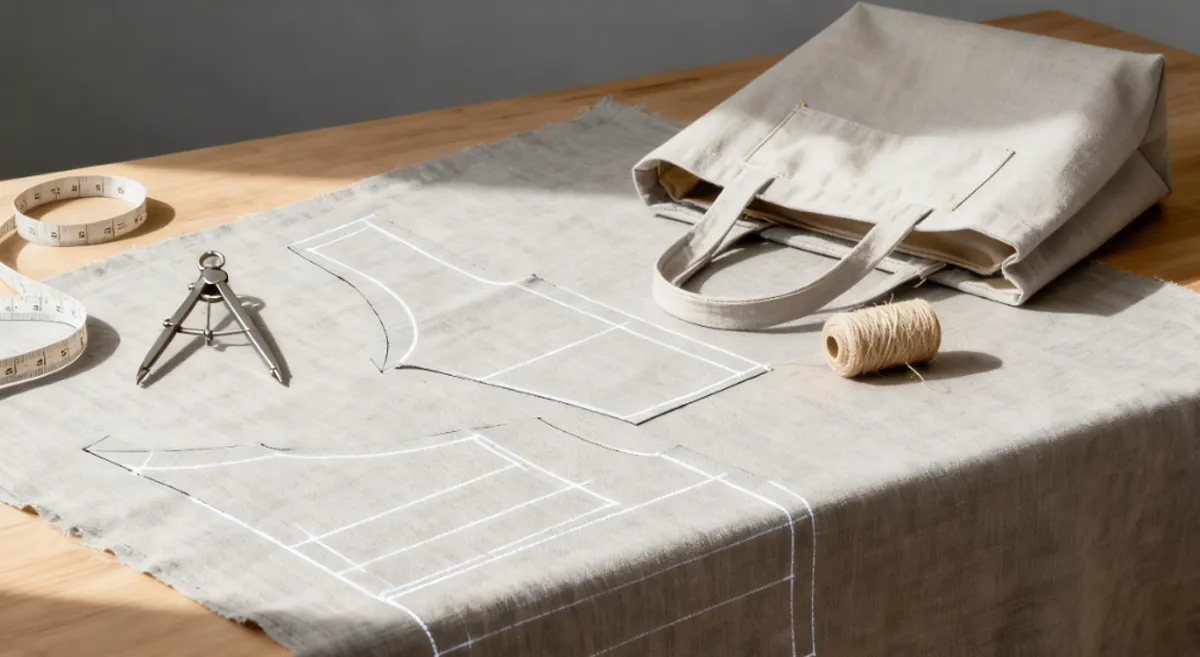You can transform a nylon bag with color using a simple dyeing process. If you’re wondering how to dye a nylon bag, the right dye makes all the difference, so always check labels and follow safety instructions. If you want to personalize your bag, this guide will help you get started. Dyeing a nylon bag gives you a fresh look and lets your creativity shine.

Key Takeaways
- Choose the right dye for nylon. Acid dyes are the best option for vibrant and lasting color.
- Prepare your nylon bag by cleaning it thoroughly. A clean, damp bag helps the dye spread evenly.
- Heat water to 200°F for dyeing. Hot water opens the nylon fibers, allowing better dye absorption.
- Stir the dye bath regularly. This ensures even color distribution and prevents streaks.
- Rinse your dyed bag in cold water. Cold water locks in the color and prevents bleeding.
- Air dry your bag away from sunlight. This protects the color and maintains the nylon’s strength.
- Monitor the dyeing process closely. Check the color every few minutes to achieve your desired shade.
- Use gentle cleaning methods after dyeing. Avoid harsh chemicals to keep your bag looking fresh.
How to Dye a Nylon Bag: Materials & Prep
Before you start, you need to gather the right supplies and get your nylon bag ready. This step makes the whole process smoother and helps you get the color you want.
Dye Nylon Bag Supplies
Dye Types for Nylon
Choosing the best dye for nylon fabric is important. Not all dyes work the same way. Some give you bright, even color, while others might fade or wash out quickly. Here’s a quick look at the most common types:
| Dye Type | Properties | Suitability for Nylon |
|---|---|---|
| Acid Dyes | Best for tub dyeing, provides solid even color. | Highly recommended for nylon. |
| Lanaset or Super Wash | More washfast but harder to achieve even color. | Suitable for nylon with caution. |
| Dharma Fiber Reactive | Can be converted to acid dye, economical but colors may shift. | Not the primary choice for nylon. |
| iDye | Quick and easy application, but less permanent. | Not recommended for long-lasting results. |
You can try brands like Dharma Acid Dyes or Jacquard Acid Dyes. These work well with nylon and give you strong, lasting color.
Safety Equipment
Dyeing can get messy, and you’ll work with hot water. Make sure you have:
- Rubber gloves to protect your hands
- An apron or old clothes
- Safety glasses if you want extra protection
- Pot holders for handling hot pots
- A well-ventilated area
Prepping the Bag
Cleaning Steps
You want your bag to soak up the dye evenly. Dirt and oils on nylon can block the dye and cause patchy spots. Wash your bag with mild soap and warm water. Rinse it well so no soap stays behind. Let it dry a bit, but keep it damp for the next step.
Tip: A clean, damp bag helps the dye spread smoothly and gives you a better result.
Damage Check
Look over your nylon bag for any rips, holes, or weak spots. Dye can make damage worse, so fix any problems before you start. If you see loose threads, trim them. If you find a tear, sew it up. This way, your bag will look great after you finish dyeing.
Now you have your supplies ready and your bag prepped. You’re set to move on to the next method for adding color to your nylon bag!
Dye Nylon: Setting Up the Dye Bath
Getting the dye bath ready is a big step in the process. When you start preparing the dye bath, you want to make sure everything is just right. This helps you get even, bright color on your nylon bag.
Water & Temperature
Heating to 200°F
You need hot water to dye nylon. Fill a large stainless steel pot with enough water to cover your bag. Place the pot on the stove and heat the water. Aim for a temperature between 180°F and 220°F. Most people find that 200°F works well.
Hot water is key because it helps the nylon fibers open up. This lets the dye soak in better and gives you a stronger color.
- The recommended water temperature for dyeing nylon fabric is between 180° to 220°F (82° to 104°C).
- Hot water loosens the fibers, making it easier for the dye to stick.
- Some types of nylon may need a little testing to find the best temperature.
Nylon is a special material. When you heat it, the fibers move more, and the dye can get in deeper. If you start at a lower temperature, the color might not be as even. As the water gets hotter, the dye spreads faster and covers the bag better. Try to keep the temperature steady while you work. If the water cools down, the dye might not work as well.
Mixing Dye Nylon Fabric
Dye-to-Water Ratio
Now you can start preparing the dye bath. Add your chosen dye to the hot water. For most acid dyes, use about 1% dye by weight of your bag. If your bag weighs 100 grams, use 1 gram of dye. The amount of water is less important than the amount of dye you use. If you want even color, keep the pH around 4. You can add a little vinegar to help with this.
| Bag Weight | Dye Amount (1%) | Water Needed |
|---|---|---|
| 100g | 1g | Enough to cover |
| 200g | 2g | Enough to cover |
Stirring for Even Color
Stir the dye bath well before you put in your bag. Use a long spoon or stick. Keep stirring as you add the bag. This helps the dye spread out and cover every part of the nylon. If you stop stirring, you might get spots or streaks.
Tip: Stir the dye bath every few minutes while your bag is soaking. This keeps the color even and bright.
When you dye nylon, the temperature and stirring both matter. The hotter the water, the faster the dye moves into the fabric. If you keep stirring, you help the dye reach every part of the bag. This is the secret to a smooth, even color.
Now you know how to start preparing the dye bath. With the right water temperature and careful mixing, you set yourself up for great results when you dye nylon.
Dye Nylon Fabric: Step-by-Step Process
Submerging the Bag
Even Immersion
Ready to start? You have your dye bath set up and your bag prepped. Now, you need to follow clear instructions for how to dye a nylon bag. Here’s what you do:
- Fill your large stainless steel pot about three-quarters full with hot water. Make sure the water is simmering, not boiling hard.
- If you use powdered dye, dissolve it in two cups of hot water first. You can also add the dye straight to the pot if you want.
- Stir the dye bath until the dye is fully mixed in. You want no clumps or powder left.
- Hold your nylon bag and gently lower it into the dye bath. Let any trapped air escape so the bag sinks evenly.
- Make sure the bag is fully covered by the dye. You want every part to touch the dye bath for even color.
Tip: Push the bag down with a spoon or tongs if it floats. This helps you get a smooth, even result when dyeing nylon fabric.
Simmer & Stir
Timing (30-60 Minutes)
Once your bag is in the dye bath, you need to let it simmer. The process for dyeing nylon fabric takes time. Most instructions say to keep the bag in the dye bath for 30 to 60 minutes. If you want a deeper color, you can leave it longer, even up to two hours. Some people let the bag sit overnight for bold shades.
Stir Every 5 Minutes
Don’t just leave the bag alone. Stir the dye bath every five minutes. Use a long spoon to move the bag around. This keeps the dye nylon fabric process even and stops streaks or spots from forming. Agitation is important for dyeing nylon fabric. If you stir often, you help the dye reach every part of the bag.
Note: If you want a rich red color, let the bag soak longer. The longer you leave it, the deeper the color gets.
Achieving Desired Color
Monitoring Progress
You want to get the color just right. Keep checking your bag during the process. Lift it out with tongs and look at the shade. If it’s too light, put it back in the dye bath. If it’s dark enough, you can move to the next step.
Several factors affect the final color when you dye nylon fabric. Here’s a quick table to help you understand what matters:
| Factor | Description |
|---|---|
| pH level | The dye bath needs to be acidic. If it’s too high, you get poor color. Too low can hurt nylon. |
| Temperature | Hot water (90°C to 100°C) helps. Too hot can damage the bag. |
| Dye concentration | More dye gives deeper color, but too much can cause uneven results. |
| Time | Longer dyeing means deeper color, but watch for unevenness. |
| Use of auxiliaries | Leveling agents help spread dye. Wetting agents help dye soak in. |
| Agitation | Stirring keeps color even. Not enough stirring causes spots. |
| Nylon fiber properties | The type of nylon affects how well the dye works. |
Tip: If you want to know how to dye a nylon bag for the best results, keep an eye on these factors. Adjust as needed during the process.
Follow these instructions for dyeing nylon fabric and you’ll see your bag change color right before your eyes. The process is simple if you stay patient and keep stirring. You can always check the color and leave the bag in longer if you want a bolder look. When you finish, you’ll have a custom bag that shows off your style.
Rinsing & Drying Nylon Bag
Rinsing Steps
Cold Water Rinse
You just finished coloring your nylon bag. Now, you need to rinse it the right way. Cold water works best for rinsing dyed nylon. Cold water keeps the fabric fibers closed, which helps trap the dye inside. This step stops color from bleeding out and keeps your bag looking bright.
Here are some best practices for rinsing your dyed nylon bag:
- Sort your items by color and fabric type. Keep light and dark colors separate so you don’t get unwanted dye transfer.
- Always use cold water for rinsing. Cold water helps lock in the color and keeps the nylon strong.
- Try using color-catcher sheets. These sheets grab loose dye in the wash and stop it from staining other things.
- Add a splash of vinegar or a pinch of salt to the rinse water. Both help seal the dye and can make your bag feel softer.
Tip: Rinse your bag until the water runs clear. If you see color in the rinse water, keep going. This means extra dye is still coming out.
Water Runs Clear
You want to keep rinsing your nylon bag until the water is completely clear. If the water looks cloudy or colored, the dye is still leaving the fabric. Clear water means your bag is ready for the next step. This helps prevent color bleeding later and keeps your bag looking fresh.
Washing & Air Drying
Mild Detergent
After rinsing, you should wash your nylon bag gently. Use a mild detergent that is safe for colored fabrics. You can machine wash your bag or spot clean it by hand. Never use bleach because it can damage the nylon and ruin the color.
Here’s a simple washing routine:
- Wash with a gentle detergent.
- Spot clean if you see any stains.
- Blot out extra water with a towel.
Note: Avoid using hot water or harsh chemicals. These can break down the nylon and fade the color.
Avoid Sunlight
When it’s time to dry your bag, air drying is the best choice. Lay your bag flat or hang it up in a cool, shaded place. Never use heat or direct sunlight. Sunlight can cause big problems for nylon bags:
- UV rays break down the elasticity of nylon. Your bag might lose its stretch and shape.
- Sunlight makes colors fade. The dye can turn dull or uneven if you leave your bag in the sun.
- Sun damage builds up over time. You might not notice it right away, but your bag will wear out faster.
Tip: Always dry your nylon bag indoors or in a shaded spot. This keeps the color bright and the fabric strong.
Air drying helps your bag last longer and keeps it looking new. If you follow these steps, you’ll protect your bag and enjoy your custom color for a long time.
Tips & Troubleshooting for Dyeing Nylon
You want your nylon bag to look amazing after dyeing. Sometimes, things don’t go as planned. Here are some tips and fixes to help you get the best results and solve common problems.
Vibrant Results
Dye Concentration
Getting bold color starts with the right amount of dye. If you use too little, your bag looks faded. If you use too much, the color might turn out uneven. The best dye concentration for nylon fabrics is about 68.6%. This level gives you strong, vibrant color. The relationship between dye concentration and color vibrancy isn’t always simple, so you may need to experiment a bit.
Quality of Nylon
The type of nylon you use matters. High-quality nylon absorbs dye better and gives you brighter results. If your bag feels stiff or has a coating, the dye might not stick well. Always check the label and choose bags made from pure nylon for successful nylon fabric dyeing.
Want your colors to pop? Try these tricks:
- Add a cup of white vinegar to the dye bath. Vinegar helps the dye soak deep into the fabric.
- Mix in a tablespoon of laundry detergent or Dawn dish soap. This helps the dye spread evenly.
Common Issues
Uneven Dye
You might notice patchy or streaky spots after dyeing synthetics. Here are the most common problems:
- Uneven dyeing: Colors look patchy or streaky.
- Color differences: The final shade doesn’t match your sample.
- Color stains or spots: Unwanted marks appear.
- Poor color fastness: Colors fade after washing.
You can prevent these issues by controlling the temperature, bath ratio, and pH levels. Always test your dye before you start a big project. Use leveling agents to help the dye spread out and keep the color even.
Fading
Fading happens when the dye doesn’t stick well or washes out. High pH levels can stop the dye from soaking in, while low pH can make the nylon too open and cause uneven color. Keep the pH between 6 and 7 for light colors and 4 to 6 for dark colors. Leveling agents also help keep the color strong.
Fixes & Re-dyeing
Patchy Color Solutions
If your bag comes out with patchy color, don’t worry. You can fix it! Check out this table for quick solutions:
| Likely Causes | Fixes |
|---|---|
| Inadequate salt dissolution or addition | Make sure salt is fully dissolved before adding dye. |
| Rapid dye strike rate | Add salt in small portions for even color. |
| Short dyeing time | Raise the temperature slowly, about 1-2°C per minute. |
| Low liquor ratio | Use a leveling agent for tricky shades. |
If you need to re-dye your bag, the type of dye matters. Disperse dyes are easier to reduce with alkaline agents. Acid dyes and neutral dyes are harder to change, and strong chemicals can damage the nylon. Always test a small area first if you want to try re-dyeing synthetics.
Tip: Take your time and follow each step. You’ll get better results and a bag that looks just the way you want.
Caring for Dyed Nylon Bags
Cleaning After Dyeing
Gentle Wash
You want your dyed bag to stay fresh and vibrant. Start by emptying your purse and checking the care label for any special instructions. Gather a mild detergent, lukewarm water, and a soft cloth. Here’s a simple cleaning routine you can follow:
- Dust off any surface dirt with a dry cloth.
- Mix a gentle cleaning solution using mild detergent and lukewarm water.
- Dip a soft cloth into the solution and clean the outside of your bag. Try not to soak the fabric.
- For the inside, remove crumbs and gently treat any light stains.
- After cleaning, air dry your bag in a shaded spot. Stuff it with tissue paper to help keep its shape.
Tip: Always avoid scrubbing too hard. Gentle cleaning helps your bag last longer and keeps the color looking sharp.
Color Preservation
You want your bag’s color to stay bright. Here are some easy ways to protect the color:
- Skip harsh chemicals and strong detergents. These can make colors fade fast.
- Use cold water when you clean your bag. Cold water helps keep colors bold.
- Dry your bag away from direct sunlight. Sunlight can cause fading.
- Test your cleaning method on a hidden spot first. This helps you avoid surprises.
Note: Regular gentle cleaning and smart drying choices help your bag look new for a long time.
Storage Tips
Sunlight Protection
Storing your bag the right way makes a big difference. Keep your bag in a cool, dry place, far from direct sunlight. Sunlight can break down the fibers and fade the color. Here’s a quick look at what sunlight and moisture can do:
| Factor | Effect on Nylon Bags |
|---|---|
| UV Exposure | Degrades fibers, causes brittleness and micro-cracks. |
| UV Degradation | Can lead to fiber breakage over time. |
Use a dust bag or a clean pillowcase to cover your bag. This shields it from dust and accidental stains.
Moisture Control
Moisture can sneak up on your bag and cause problems. If your bag gets wet, it can absorb water and take longer to dry. Sometimes, mildew can form if you don’t dry it properly. Here’s what you need to know:
| Factor | Effect on Nylon Bags |
|---|---|
| Moisture Absorption | Increases weight, prolongs drying, can cause mildew. |
| Water Absorption | Affects drying time and can lead to mildew. |
- Store your bag in a dry place.
- Avoid putting heavy or sharp items inside while storing. This keeps the shape and prevents damage.
Callout: Regularly wipe down your bag and keep it covered. These simple steps help your dyed bag stay beautiful and strong.
Conclusion
You now know how to dye a nylon bag and keep it looking great. Remember these tips for best results:
- Always clean your bag by hand.
- Choose a specialist who works with handbags and backpacks.
- Make sure all cleaning happens in-house.
We’re a professional bag manufacturer specializing in customization, wholesale, OEM, and ODM services for all kinds of bags — including nylon totes, backpacks, cooler bags, travel organizers, and more. With years of production experience and advanced equipment, we handle everything from design and material sourcing to sampling, bulk manufacturing, and quality inspection under one roof.
FAQ
Can I dye any nylon bag?
You can dye most nylon bags. Check the label first. If your bag has a waterproof coating or is blended with other fibers, the dye may not stick well.
What dye works best for nylon?
Acid dyes work best for nylon. Brands like Jacquard and Dharma Acid Dyes give you bright, lasting color. Avoid regular fabric dyes—they may fade quickly.
Will the color fade after washing?
If you follow the steps and use the right dye, your color should stay bright. Wash your bag gently in cold water and keep it out of direct sunlight.
Can I use a washing machine to dye my nylon bag?
You should not use a washing machine for dyeing nylon bags. The heat and agitation may damage the bag or cause uneven color. Use a pot on the stove instead.
How do I fix uneven color spots?
You can re-dye your bag if you see uneven spots. Make sure you stir the dye bath often and keep the temperature steady. Try using a leveling agent for smoother results.
Is it safe to dye a nylon bag at home?
Yes, you can dye a nylon bag at home. Wear gloves and work in a well-ventilated area. Keep kids and pets away from hot water and dye.
Can I dye a black nylon bag a lighter color?
You cannot dye a black nylon bag a lighter color. Dye only adds color—it cannot remove or lighten dark shades. Start with a white or light-colored bag for best results.
How long does the dyeing process take?
The whole process usually takes about two to three hours. This includes prepping, dyeing, rinsing, and drying your bag.




